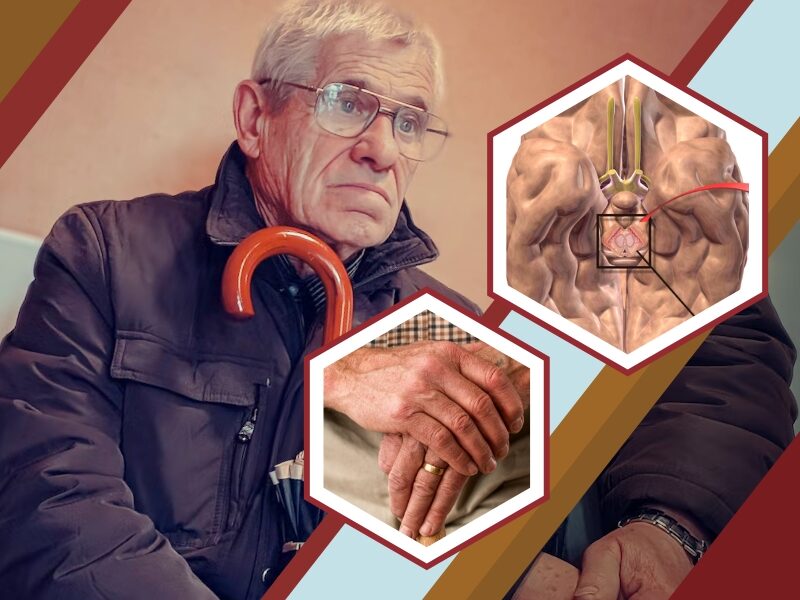Parkinson’s Disease: Symptoms, Causes, and Treatment

Parkinson’s disease is a progressive disorder that affects the nervous system and the parts of the body controlled by the nerves. Symptoms start slowly. In the early stages of Parkinson’s disease, your face may show little or no expression. Your arms may not swing when you walk. The disease may be improved with medications.
What is Parkinson’s disease?
Parkinson’s disease (PD) is a type of movement disorder that can affect the ability to perform daily activities. It is characterized by its most common motor symptoms, tremors, stiffness or rigidity of the muscles, and slowness of movement. Also, it manifests in non-motor symptoms including sleep problems, constipation, anxiety, depression, and fatigue.

Signs and Symptoms
The known symptoms of Parkinson’s disease involve loss of muscle control. However, experts now know that muscle control-related issues aren’t the only possible symptoms of Parkinson’s disease.
Motor-related symptoms:
- Slowed movements (bradykinesia)
- A tremor
- Rigidity or stiffness
- Unstable posture or walking gait
Additional motor symptoms can include:
- Blinking less often than usual
- Cramped or small handwriting
- Drooling
- Mask-like facial expression
- Trouble swallowing (dysphagia)
- Unusually soft speaking voice (hypophonia)
Non-motor symptoms:
- Autonomic nervous system symptoms
- Depression
- Loss of sense of smell
- Sleep problems such as periodic limb movement disorder (PLMD), rapid eye movement (REM) behavior disorder, and restless legs syndrome.
- Trouble thinking and focusing
What causes Parkinson’s disease?
Parkinson’s disease is caused by a loss of nerve cells in a part of the brain called the substantia nigra. This leads to a reduction in a chemical called dopamine in the brain. Dopamine plays a vital role in regulating the movement of the body. A reduction in dopamine is responsible for many of the symptoms of Parkinson’s disease.
Exactly what causes the loss of nerve cells is unclear. Most experts think that a combination of genetic and environmental factors is responsible.
Treatment and Management of Parkinson’s disease
There are currently no blood or laboratory tests to diagnose non-genetic cases of Parkinson’s. Doctors usually diagnose the disease by taking a person’s medical history and performing a neurological examination. If symptoms improve after starting to take medication, it’s another indicator that the person has Parkinson’s.
Several disorders can cause symptoms similar to those of Parkinson’s disease. People with Parkinson’s-like symptoms that result from other causes, such as multiple system atrophy and dementia with Lewy bodies are sometimes said to have Parkinsonism. While these disorders initially may be misdiagnosed as Parkinson’s, certain medical tests, as well as responses to drug treatment, may help to better evaluate the cause. Many other diseases have similar features but require different treatments, so it is important to get an accurate diagnosis as soon as possible.
While there is no cure for Parkinson’s at this time, there are several treatments that can ease symptoms. The medications are the mainstay of treatment, but modalities are often used in combination. Physical, occupational, and speech therapy can be critical to the treatment plan. Surgical options also have an important role for a subset of patients with the disease. Lastly, complementary therapies can be used to treat some Parkinson’s disease symptoms. Your physician and other healthcare professionals can help you determine the best treatment plan for your symptoms.

Recommended medication that can be used to manage Parkinson’s disease:
- Ropinirole Hydrochloride – this medication can be used alone or in combination with other medications to treat the disease. The drug helps improve symptoms of the disease such as the ability to move and decrease shakiness, stiffness, slowed movement, and unsteadiness. It may also decrease the number of episodes of not being able to move.
The doctor may prescribe other medicines to treat Parkinson’s symptoms, including:
- Dopamine agonists stimulate the production of dopamine in the brain
- Enzyme inhibitors increase the amount of dopamine by slowing down the enzymes that break down dopamine in the brain
- Amantadine to help reduce involuntary movements
- Anticholinergic drugs to reduce tremors and muscle rigidity



